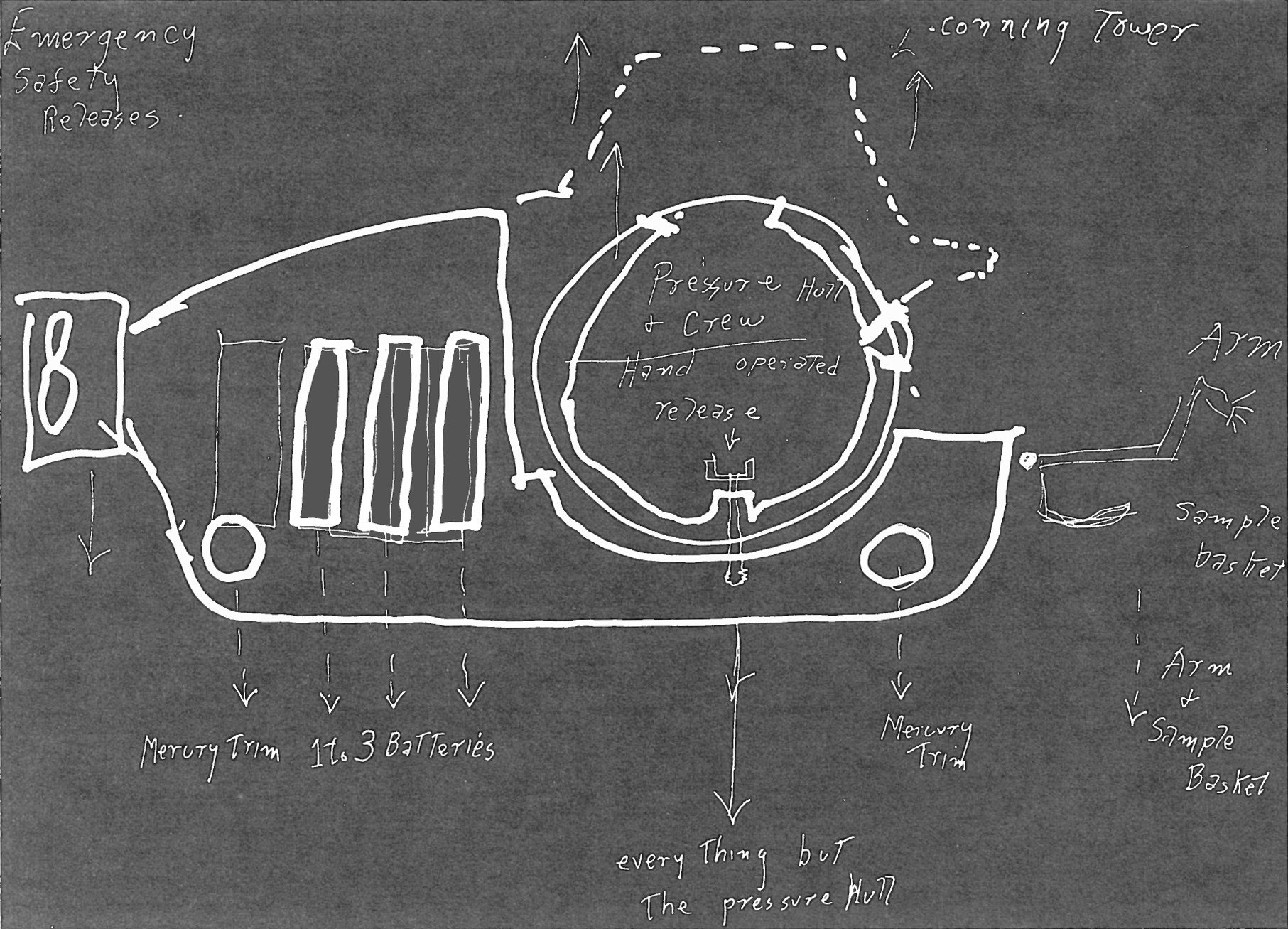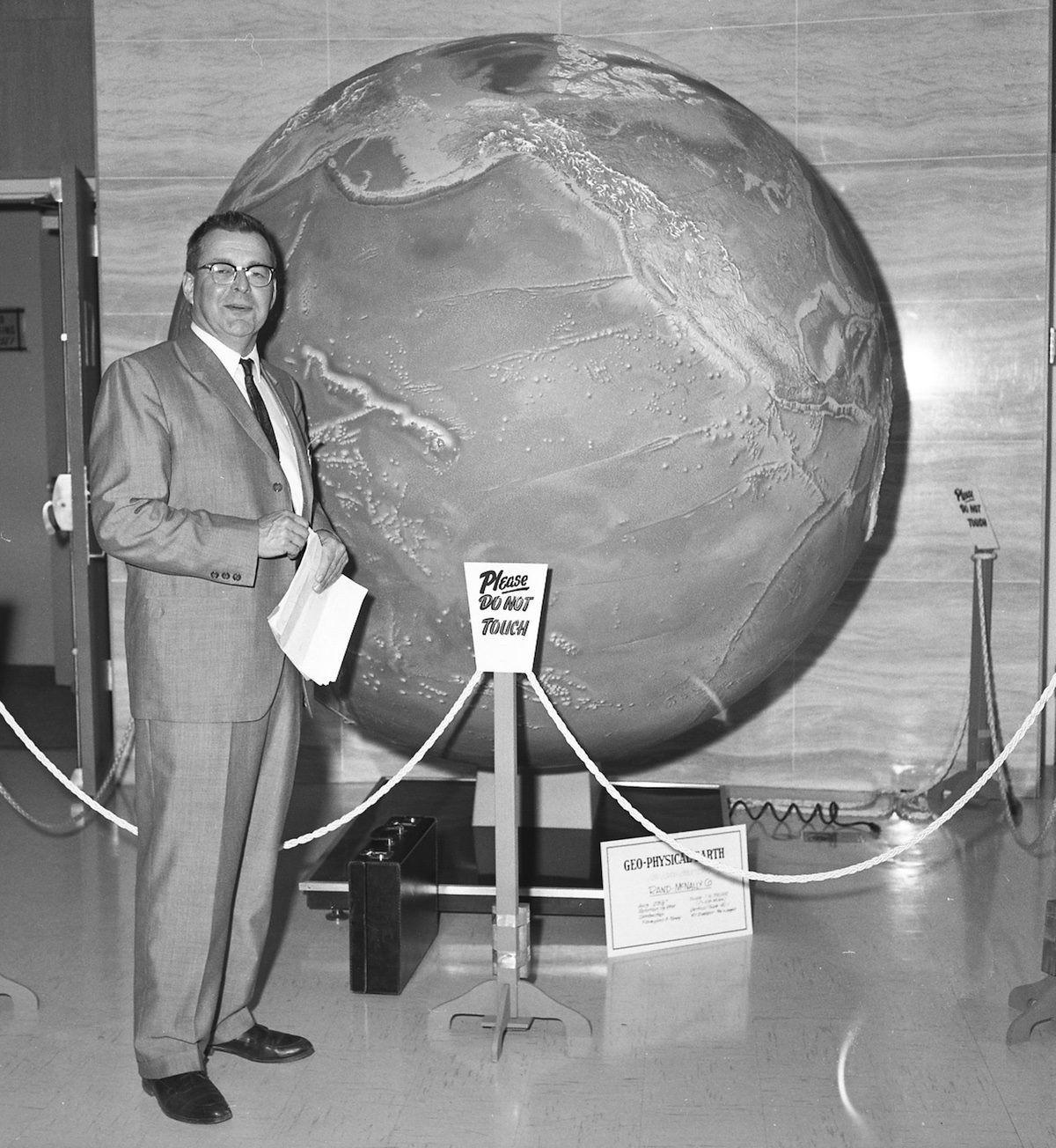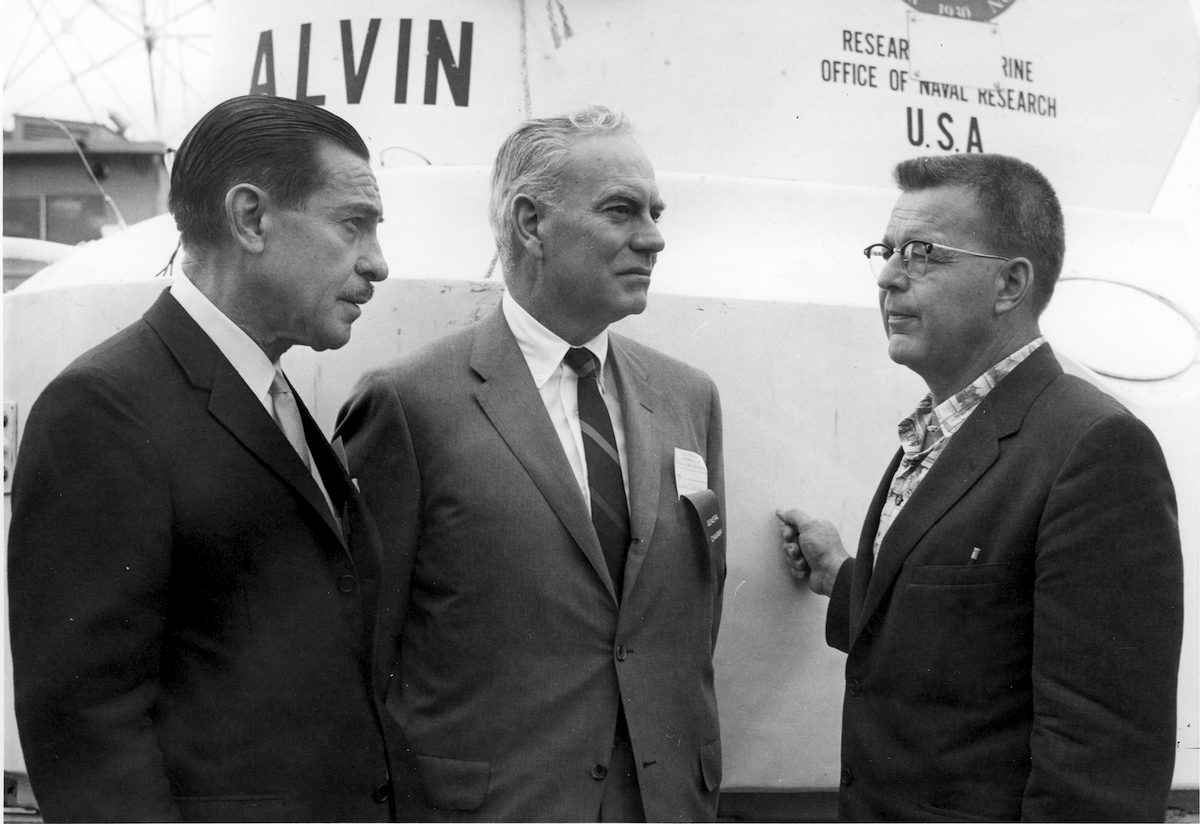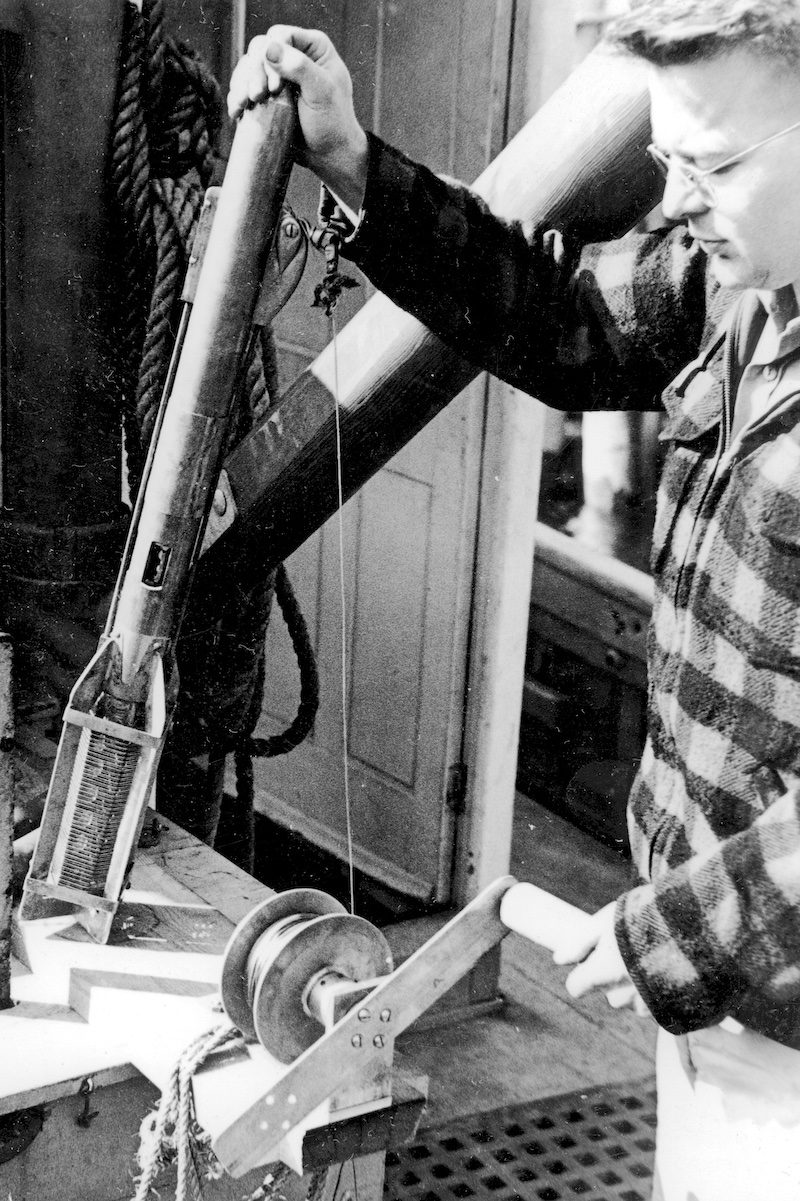By Hannah Piecuch
In the late 1950s, when the idea of a human-occupied submersible was just an engineering sketch, WHOI’s newly-formed Deep Submergence Group started calling it “Alvin” after WHOI scientist Allyn Vine, a vocal advocate for developing a scientific submersible to study the deep sea.
Vine’s argument for human exploration of the ocean proved persuasive. At a 1956 symposium convened by the National Academy of Sciences and National Research Council, members passed a resolution to create a national program that would develop vehicles capable of transporting humans to the deep sea. Six years later, in 1964, Alvin was ready to dive.
“A good instrument can measure almost anything better than a person can if you know what you want to measure. But people are so versatile, they can sense things to be done and can investigate problems. I find it difficult to imagine what kind of instrument should have been put on the Beagle instead of Charles Darwin.”
-Al Vine
Vine worked closely with the U.S. Navy during the war years. His research included testing antifouling paints, studying the transmission of sound in the sea, developing underwater explosives, designing the first deep-sea cameras, making current and drift predictions to locate downed aviators on life rafts, and troubleshooting issues with submarines.
In peacetime, Vine threw himself into adapting war technologies for science, with a particular interest in exploring the deep sea. Vine wasn’t at his namesake’s commissioning ceremony, because he was deep beneath the surface of the Atlantic Ocean in the French submersible Archimede.
Further reading
Down to the Sea for Science: 75 Years of Ocean Research Education & Exploration at the Woods Hole Oceanographic Institution, by Vicky Cullen
Trailblazer in the Ocean: Alvin celebrates 50 years of pioneering accomplishments by Lonnie Lipsett, Oceanus
Allyn Vine, 79, Dies; Proponent of Submersibles by William Dicke, The New York Times




